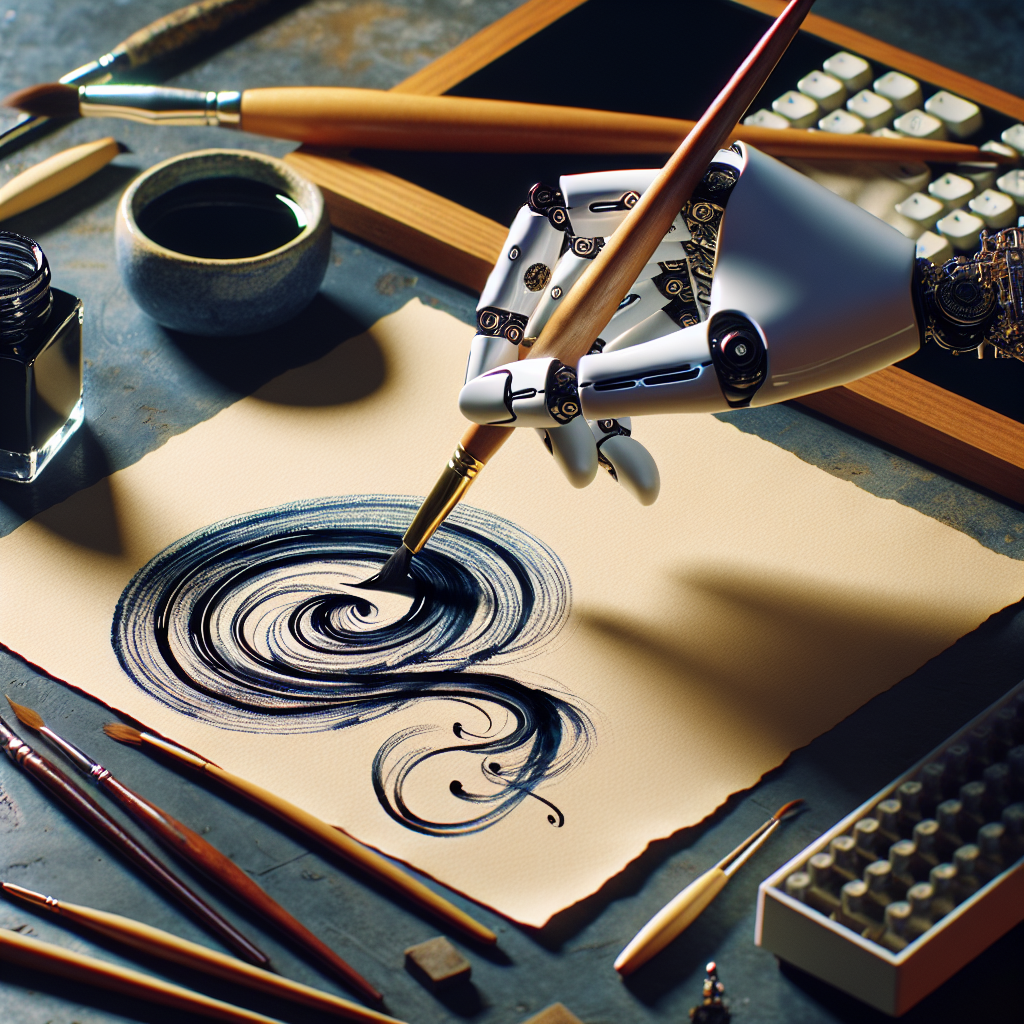Artificial Intelligence (AI) has made significant advancements in recent years, revolutionizing various industries and transforming the way we work and interact with technology. One of the most intriguing applications of AI in the art world is in the field of calligraphy. Calligraphy, a traditional art form that involves the skillful and artistic writing of characters, has a rich history and cultural significance in many societies. By combining AI with calligraphy, artists and enthusiasts are able to explore new possibilities and push the boundaries of this ancient art form.
AI and Calligraphy: A Match Made in Artistic Heaven
Calligraphy is a highly skilled and intricate art form that requires years of practice and dedication to master. The art of calligraphy is not just about writing beautifully, but also about the expression of emotions, thoughts, and cultural traditions through the stroke of a brush or pen. With the help of AI, calligraphy enthusiasts can now explore new ways of creating and appreciating this ancient art form.
One of the key ways in which AI is being used in calligraphy is through the development of calligraphy robots. These robots are equipped with advanced algorithms and sensors that allow them to mimic the movements and techniques of a skilled calligrapher. By analyzing the strokes and patterns of calligraphy masters, these robots are able to replicate their writing style with impressive accuracy and precision.
In addition to calligraphy robots, AI is also being used to create digital calligraphy tools that can generate beautiful and intricate designs with just a few clicks. These tools use machine learning algorithms to analyze the shapes and forms of traditional calligraphy characters, allowing users to customize and create their own unique designs. This not only saves time and effort for calligraphy enthusiasts, but also opens up new possibilities for experimentation and creativity.
Another exciting application of AI in calligraphy is in the field of automated writing. By training AI models on vast datasets of calligraphy samples, researchers and artists are able to develop algorithms that can generate new and unique calligraphy designs. These algorithms can be used to create custom fonts, logos, and designs that capture the essence and beauty of traditional calligraphy.
Exploring Traditional Art Forms with Technology
The integration of AI with calligraphy not only enhances the creative process, but also opens up new opportunities for artists and enthusiasts to explore and experiment with this traditional art form. By combining the precision and accuracy of AI with the creativity and expression of calligraphy, artists can push the boundaries of what is possible and create truly unique and innovative designs.
One of the key benefits of using AI in calligraphy is the ability to learn and improve over time. By analyzing vast amounts of data and feedback, AI algorithms can continuously adapt and refine their techniques, allowing artists to achieve new levels of skill and mastery. This adaptive learning process not only accelerates the learning curve for beginners, but also provides experienced artists with new insights and perspectives on their craft.
Furthermore, AI can also help to preserve and promote traditional calligraphy techniques and styles. By digitizing and analyzing historical calligraphy samples, researchers and artists can uncover hidden patterns and insights that can inform and inspire new works of art. This fusion of tradition and technology not only enriches the artistic experience, but also ensures that the cultural heritage of calligraphy is preserved and passed down to future generations.
FAQs
Q: Can AI completely replace human calligraphers?
A: While AI has made significant advancements in mimicking the techniques and styles of human calligraphers, it is unlikely that it will completely replace them. Calligraphy is not just about writing beautifully, but also about the expression of emotions and cultural traditions. Human calligraphers bring a unique touch and creativity to their work that cannot be replicated by AI.
Q: How can I get started with AI and calligraphy?
A: There are several online resources and tools that can help you get started with AI and calligraphy. You can explore digital calligraphy tools that use AI algorithms to generate custom designs, or try your hand at training AI models to create your own unique calligraphy styles. Experimenting with different techniques and styles is a great way to explore the possibilities of AI in calligraphy.
Q: Is AI in calligraphy only for experienced artists?
A: No, AI in calligraphy is for artists of all skill levels. Whether you are a beginner looking to learn the basics of calligraphy or an experienced artist looking to push the boundaries of your craft, AI can help you explore new techniques and styles. The adaptive learning capabilities of AI make it a valuable tool for artists at every stage of their creative journey.
In conclusion, AI has the potential to revolutionize the art of calligraphy by combining traditional techniques with modern technology. By exploring new possibilities and pushing the boundaries of this ancient art form, artists and enthusiasts can create truly unique and innovative designs that capture the essence and beauty of calligraphy. Whether you are a beginner looking to learn the basics of calligraphy or an experienced artist looking to expand your creative horizons, AI in calligraphy offers a wealth of opportunities for exploration and experimentation.

